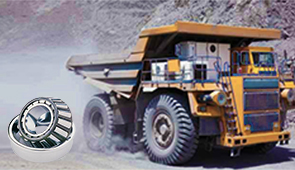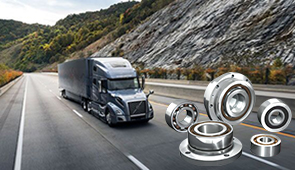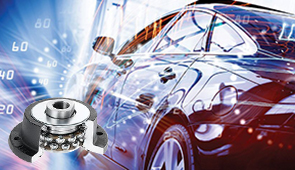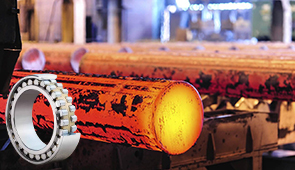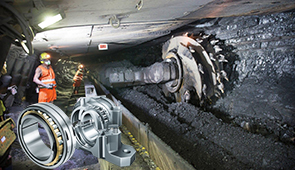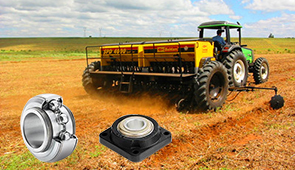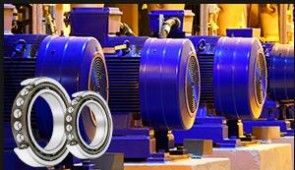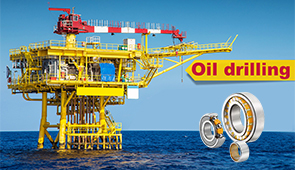What Causes a Wheel Bearing to Keep Going Bad?
Wheel bearings are critical components in the functioning of any vehicle, yet they often go unnoticed—until something goes wrong. When a wheel bearing consistently fails, it can lead to costly repairs, compromised safety, and ongoing frustration for vehicle owners. But what causes this repeated issue, and how can it be prevented? This article dives into the complex factors behind recurring wheel bearing failures, from improper installation and environmental conditions to inadequate maintenance. By understanding these causes, you’ll be better equipped to identify warning signs, address underlying problems, and extend the lifespan of your vehicle’s wheel bearings.
Symptoms of a Bad Wheel Bearing
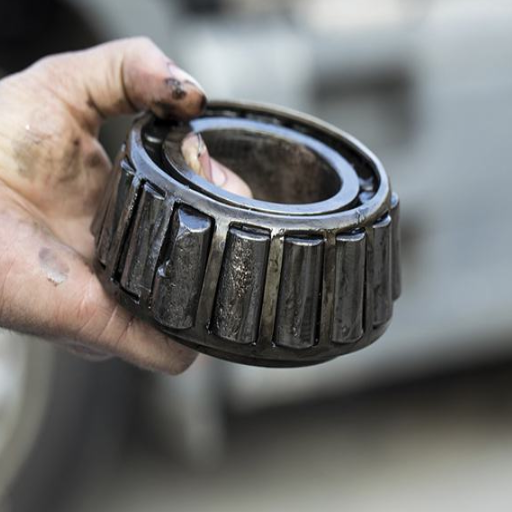
Unusual Noises from the Wheel
Unusual noises emanating from the wheel are among the most common and early symptoms of a failing wheel bearing. Such noises often present as a humming, growling, or rumbling sound that intensifies with the acceleration of the vehicle. These sounds are caused by the deterioration of some internal parts of the bearing through wear or lack of lubrication. Unless corrected, these noises will change to grinding noises louder than before, signifying more severe damage.
Each type of noise will differ in characteristics and frequency, depending on the set of driving maneuvers and how the wheel is moving. Changing noises while taking turns can help locate the specific bearing causing the problem; turning right should load the left bearing more, and if it is bad, the noise will get louder, and vice versa for left turns.
Immediate inspections and diagnosis are highly recommended to address the issue at hand. Upon discovering that a vehicle is making noises, it should be driven to the nearest trusted technician for a diagnosis. Using a chassis ear and other specialized road tests, the professional will confirm the problem in a timely manner. Quick interventions will prevent further damage to other components of the wheel and allow safe vehicle operation, which brings down the cost of repairs and the risk of driving on a compromised wheel bearing.
Vibrations While Driving
A car vibrating while driving can result from a variety of issues that must be rectified in order to safeguard and maintain the vehicle’s performance. Imbalance in tires or uneven tread of one or more tires is one of the commonly known reasons for vibrations due to inconsistency in road contact. Such issues are usually corrected by proper tire alignment, rotation, or balancing. Worn tires should be changed immediately to avert dangers to safety and comfort on the road.
Suspension problems or the wheel setup constitute another common reason. At times, vibrations appear either at given speeds or during turns with worn ball joints or tie rods, or shock absorbers compromising the vehicle’s stability. Maintenance activities and inspections help identify any such wear before it develops into a serious mechanical failure.
If the vibration is linked with acceleration or speed, backbone or axle damage could be a reason, especially in rear- and all-wheel drives. A bent axle and a damaged universal joint invariably cause vibrations during acceleration and at high speeds. To repair such damage, a thorough inspection from a qualified technician is imperative, which usually involves restoring or replacing the faulty component. Proper maintenance and early attention to signs are the best prevention against worsening vibration problems.
Uneven Tire Wear Patterns
Uneven tire wear is a frequent issue leading to the loss of vehicle performance, safety, and efficiency. A tire wears unevenly across the tread because of reasons ranging from improper alignment, incorrect tire pressures, worn-out suspension, or simply unbalanced wheels. Maintaining an eye on wear patterns, be it on the outer edges, center, or even diagonally, can give clues to the underlying problems early before they turn into more serious ones.
The most common reason for uneven tire wear is the result of incorrect wheel alignment. When the wheels are not correctly aligned, some parts of the tires are pressed with greater forces onto the road, thus wearing these parts unfairly. They should have alignment specifications checked regularly to prevent this scenario. Tires can wear unevenly when they are either underinflated or overinflated. Deflation causes wear on the outer edges of the tire, while overinflation wears the center of the tread. Keeping tire pressure up to the mark, as per the vehicle’s manual, is the best safeguard against this.
Worn or faulty suspension components also lead to unexpected tire wear patterns. Ball joints, tie rods, and bushings, among others, preserve the contact of tires with the road surface. As their condition deteriorates, they allow a lateral shift in wheel movement that causes patchy or feathered wear patterns on tires. To guarantee safety and performance, it is advisable to regularly inspect the suspension system and replace any problem areas that are identified. Timely repair of such problems leads to extending the tire life and attaining a smooth and safe drive.
Common Causes of Wheel Bearing Failure
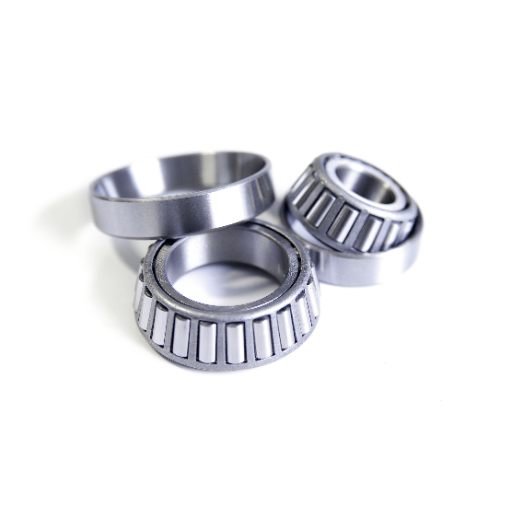
Poor Installation Techniques
The improper installation of wheel bearings is a predominant cause of early failure and inefficiency. Bearing internal parts, such as races, cages, or rolling elements, may get damaged during installation if incorrect tools or methods are used. Bearing defects with accelerated wear are caused by some minute defects due to the high rubbing effect from improper force application or misalignment of the bearing during its seating stage. In an installed bearing, contamination follows as another most discouraging aspect – installing bearings in dirty places or without maintaining a clean environment introduces dirt, debris, or moisture that can potentially compromise the function of the bearing.
Another one of these common problems occurs when tolerances are not strictly followed. Bearings need to fit precisely into their housings, and variations from these tolerances can cause them not to seat properly or produce vibrations during service. Fasteners holding the wheel assemblies are also often over-torqued or under-torqued, and bearings may be stressed, and their life is reduced more than those conditions alone. The common effects are high temperatures, friction, and inefficiency in the entire system.
Following the torque specifications given by the vehicle manufacturer will cut down or eliminate the chances of these incidents, while proper use of special tools will see the bearing installed correctly. The condition of the bearings should be checked before installation, while installations themselves should take place in a clean, controlled environment. Following the installation instructions will not only prevent premature wheel bearing failure but will also guarantee vehicle safety and dependable performance.
Low-Quality Replacement Parts
The use of low-quality replacement parts denotes a significant risk to the functionality and safety of any vehicle. Inferior-grade wheel bearings generally fail to meet necessary standards of load handling, temperature tolerance, and durability. Components of this nature wear out prematurely and thus diminish the vehicle’s performance, raise maintenance costs, and in extreme cases, may lead to actual system failure. There is usually no rigorous testing and precision engineering applied to maintain their proper operation under demanding conditions, in the case of bad quality replacements as opposed to high-quality, OEM-approved (Original Equipment Manufacturer) parts.
Key reasons behind why such low-quality parts get so much importance in the market are their prices. They are almost always considerably cheaper than their OEM counterparts, proving savings only in the short term while compromising long-term reliability and safety. It has been observed that vehicles installed with poor replacement parts tend to exhibit mechanical failures at higher rates, and thus addition of repair bills on top of the initial savings. And above, poor quality products tend to depreciate the integrity of other systems, like defective wheel bearings, causing uneven tire wear, misalignment, and the causing of damage to the suspension system.
Given these risks, it is highly recommended that both vehicle owners and maintenance professionals purchase their parts from reputable manufacturers or certified distributors. Putting the laboratory testing approval on parts through certifications like ISO standards or some other equivalent mechanism can provide a significant guarantee about performance and durability. Following these standards instead of opting for low-quality alternatives will help in extending the useful life of vehicle components, and at the same time, will ensure enhanced safety on the road and hence lessen operational costs over time.
Environmental Factors: Water and Debris Exposure
Water ingress and debris-inflicted exposure have paramount effects on structural integrity and the performance of components in vital systems. The ingress of moisture first accelerates corrosion, especially for metal parts, thus causing early wear and systemic failure. Outside debris, consisting of dirt, sand, or road salt, may enter joints and mechanisms, creating an abrasive environment, which depletes the matter over time. Seals, bearings, and bushings are very susceptible to such environmental exposure and stand in need of high-class protection coatings or materials capable of such exposure.
Corrosion-resistant alloys, hydrophobic coatings, and self-sealing technologies are some new developments in material science that address these problems. These enhancements extend component life and lower maintenance intervals, thereby improving overall cost efficiency. For instance, hydrophobic coatings act to repel water, minimizing any moisture build-up on surfaces and thus preventing rust formation. On the other hand, accurate debris filtration systems can keep out damaging particles to ensure optimal performance even when working in a very tough environment.
It is essential to consider these environmental factors in choosing materials and designing systems. Engineers must then subject the product to hard testing in real-world simulated conditions so as to know that water and debris exposure are not issues. This proactive stance should lead not just to industry acceptance but, more importantly, to system eminence worthy of its name.
Preventing Repeated Wheel Bearing Failures
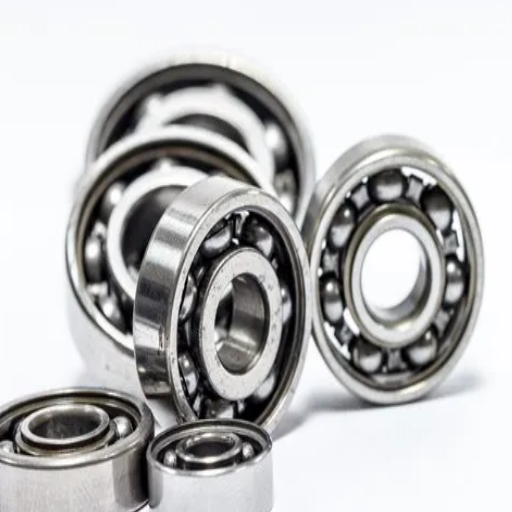
Proper Installation Techniques
The correct installation of wheel bearings cannot be stressed enough for preventing repeated failures and thus ensuring long-term reliability. Firstly, I always make sure the installation process begins with thoroughly inspecting the bearing and the surrounding parts. This would include inspecting them for any signs of wear, corrosion, or contamination that could compromise the integrity of the performance of the new bearing. If this is skipped, failure may occur prematurely as the root problem has not been addressed.
Secondly, it is about the cleanliness of the installation, which cannot be compromised. Bearings are precision components, and even the smallest particle of dirt or debris can interfere with their operation, causing overheating or reduced life expectancy. From cleaning the hub assembly to cleaning the tools, I ensure everything is clean before proceeding with the installation. Also important is proper lubrication: I only use manufacturer-approved grease and apply it evenly. Both over-greasing and under-greasing can cause poor performance.
And then, torque specifications should not be ignored. When installing them, I always apply the manufacturer’s recommended torque values with calibrated torque tools, settings, and calibration. Whenever an incorrect torque value is applied, it produces an excessive preload on the bearing that causes unnecessary stress, which in turn gives an early death. The above exact installation steps, if adhered to in a systematic manner, give consistent and reliable results, thus eliminating endless repetition of failures of wheel bearings.
Regular Inspections and Maintenance
Frequent inspection and maintenance are crucial for ensuring the proper operation and extending mechanical life, such as that of a wheel bearing, while minimizing operational risks. Visual and tactile inspections identify early signs of wear, corrosion, or contamination (e.g., grease leakage or unusual noise during operation). These inspections should be performed at intervals recommended by the manufacturer and integrated into the maintenance schedule on a routine basis. Failure to apply this practice will eventually pose a big threat to the system’s integrity, with increased downtime and costly replacements.
Data-driven maintenance methods should be thorough and shaped by evidence from manufacturer documentation and expert recommendations. For example, issuing an analysis report of grease conditions from periodic sampling compared to baseline standards is an excellent indicator of an impending problem, such as contamination or degradation resulting from adverse operating conditions. Also, measurement instruments such as dial indicators or electronic calipers will aid in monitoring critical tolerances or displacements and will help detect misalignment or uneven loading that might accelerate bearing wear.
The integration of traditional inspections with modern predictive maintenance methods further strengthens the capacity to detect failures before their occurrence. Sensor-based condition monitoring techniques, e.g., vibration monitoring and thermal imaging, support real-time visibility of plant health as well as timely intervention. By using sophisticated analytics, these techniques discern between acceptable operational variations and signals of early failures. Such precision empowers the maintenance teams to intervene proactively in dealing with issues before they turn into more severe mechanical failures. Hence, coupling old-school inspections with modern diagnostic tools is a great groundwork for making sustained reliability and operational efficiency.
Choosing High-Quality Replacement Parts
Selecting high-quality replacement parts is a very important feature of keeping any equipment for maximum performance and serviceability. The materials used, design, and manufacturing processes are factors that affect wear and tear and the compatibility of a replacement part. In principle, such parts are designed to meet or exceed the exact specifications of the original ones so as to fit the system perfectly. Any incompatibility with the system due to improper fitting or substandard performance may disrupt its functioning. In addition, trustworthy suppliers usually offer full warranties and certifications for the quality and reliability of their products.
Inferior quality replacement parts would cause a system to go into cascading failures since such components lack the strength required to sustain the operations, precision, or resistance to wear and tear. For example, faulty bearings would go into early failure and hence damage the surrounding components, thereby increasing the repair charge. Factors affecting the selection procedure for substitute components include material composition, tolerances, and certifications that may be awarded to such replacement parts. Moreover, suppliers who abide by international standards, such as ISO 9001, guarantee the implementation of a strict quality control procedure while manufacturing the parts.
Utilizing predictive analytics, maintenance software, and similar data-driven decision-making tools enables organizations to fine-tune their replacement-part selection. These programs scour through historical performance data, spot trends, and suggest the components rated as most reliable. They will also shed light on life cycle costs associated with each part, allowing the procurement team to make decisions aligned with performance targets and budgetary constraints. When coupled with a solid quality assurance program, these initiatives act as guarantees of long-term reliability and operational efficiency.
Expert Tips for Wheel Bearing Maintenance
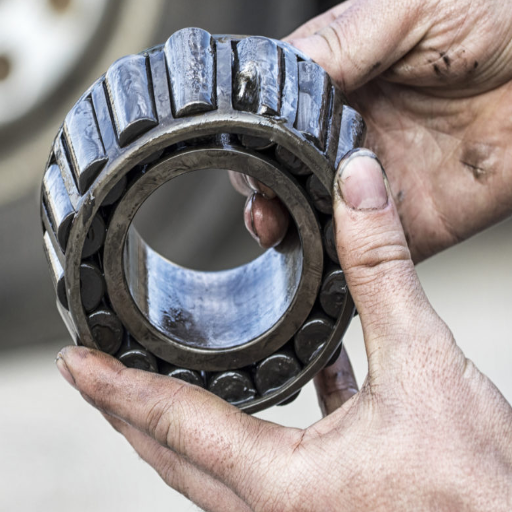
Keeping Components Properly Lubricated
Proper lubrication must be considered when maintaining the efficiency and longevity of wheel bearings. The type and consistency of lubricant should be chosen according to the operating conditions, such as temperature, load, and speed. For example, a low-viscosity lubricant is favorable for high speeds to lower frictional resistance, while heavy-load conditions call for a more viscous grease to form protective films better.
Equally important is adherence to the schedule for lubrication. Whenever reapplication is delayed, this degradation causes the lubricant to wear down, resulting in overheating and eventual failure. Whenever possible, automated lubrication should be adopted in order to regulate application rates and intervals, thus reducing human error. The entry of dust and moisture into the lubrication system should also be prevented with the use of good-quality sealing arrangements and correct storage methods.
Finally, the state of the lubricant should be assessed intermittently by sampling and analysis to allow the early detection of any contamination, oxidation, or depletion of additives. Such sophisticated analytical techniques as laser-particle counting and Fourier-Transform Infrared Spectroscopy (FTIR) offer very precise information to enable more accurate preventive maintenance, which keeps the integrity of the components intact.
Operating Within Vehicle Design Limits
Maintaining excellent performance and increasing any vehicle’s working life depend on the guidelines specified by vehicle design limits. Design limits are set by the manufacturer and include like gross weight, engine power, torque capacity, and thermal limits. These limits will have taken into account the results of various tests and engineering analyses to cement a vehicle’s ability to function in adverse environmental conditions without compromising either safety or reliability. Operating outside of these limits, such as via overloading, will accelerate the aging process, cause some structural damage, and create safety hazards.
Thermal management is one of the most significant things to consider. Parts and systems of a vehicle, such as an engine, transmission, or braking system, are very sensitive to thermal changes. The manufacturers specify these limits for the thermal to stop overheating, in cases such as warpage, lubrication failure, or thermal degradation of the materials. With the help of some enhanced cooling mechanisms, like auxiliary radiators or smart thermal sensors, operators can maintain these cooling limits with efficiency even under stressful conditions.
And then comes the matter of torque vs. load capacity. Applying too much torque in the heavy category of vehicles can stress mount driveline components like axles, differentials, and gearboxes. Proper torque management will imply more than just staying out of overload conditions; it means assuring that engine tuning or any modification remains within limits assigned by the manufacturer. Nowadays, with many diagnostic platforms deployed with real-time telemetry, monitoring is possible to mitigate detrimental mechanical stresses. By putting both design limits and monitoring tools to work together, premature failures can be avoided and better performance attained.
Cost Breakdown of Wheel Bearing Repairs
Labor Costs for Wheel Bearing Replacement
The labor costs for wheel bearing replacement may vary depending on the make and model of a vehicle and the complexity of the replacement procedure. On average, a repair facility charges anywhere between $150 and $300 for labor expenditures, which encompasses 1-2 hours of work. For premium or luxury cars, you would be looking at an increase since there may be additional disassembly of suspension components or specialized tools needed. Other variables affecting the labor cost include the vehicle’s wheel drive system (be that front-wheel, rear-wheel, or all-wheel drive) and whether the bearing is integrated with the hub assembly or pressed into the steering knuckle.
Pressed bearing systems in general require more labor for replacement, as technicians may be forced to use hydraulic presses or special pullers to do the correct removal and installation of the bearing themselves. This work often requires the removal of higher-level components such as the brake caliper, rotor, and hub assembly. In comparison, installation and replacement for bolt-on hub assemblies generally will not take as long since these assemblies are modular and can be swapped out easily with fewer tools and less process.
For cost efficiency, it is always good for owners to obtain estimates at multiple shops while asking about the details of the labor being performed. Also, certain shops might be working according to flat-rate pricing of labor and parts, but the rates vary. Understanding the details will help avoid any surprise expenses and keep everything transparent while scheduling the repair.
Cost of Parts: Standard vs. Specialty Components
General-purpose components are cheaper, more readily available, and offer diverse functionalities, while specialized parts are more precise and durable, but customization comes at additional costs.
|
Key Point |
Standard |
Specialty |
|---|---|---|
|
Cost |
Lower |
Higher |
|
Availability |
High |
Limited |
|
Durability |
Moderate |
High |
|
Customization |
Limited |
Extensive |
|
Fit |
General |
Precise |
|
Warranty |
Basic |
Comprehensive |
|
Material |
Standard |
Premium |
|
Performance |
Adequate |
Superior |
|
Testing |
Minimal |
Rigorous |
|
Sustainability |
Moderate |
High |
Factors Influencing Repair Costs
There are certain factors that influence repair costs, depending on the nature of the repair, the components involved, and external considerations. The complexity of any repair is a great determinant. Repairs that entail special tools, advanced diagnostics, or considerable dismantling of a system often bear higher labor costs. The next big criteria affecting repair costs include the price and availability of parts. Costs for aftermarket or generic parts tend to be lower than OEM (original equipment manufacturer) parts, yet their quality and compatibility may be questionable.
The area or location can thereby largely impact repair costs. Repairs tend to cost more in the big cities due to the higher labor rates, higher operating expenses of facilities, etc., than in the rural environment. Such a price can be influenced by the demand during a particular season, for instance, the maintenance of air conditioning systems may command higher charges during the summer.
Another key factor behind escalating repair costs is market conditions and supply chain dynamics, like shortages of special components. With awareness of these influencing factors, a consumer will be able to take well-informed decisions and better predict his expenses related to repairs.
Frequently Asked Questions (FAQ)
Q: What causes a wheel bearing to keep going bad?
A: A wheel bearing can keep going bad due to several factors, including contamination from dirt or moisture, excessive load on the bearing, and improper installation. Over time, the steel balls and races that make up the bearing can wear down, leading to failure. Regular inspections and maintenance can help prevent these issues.
Q: How can I tell if my wheel bearings are going bad?
A: If you hear a humming noise or grinding sound coming from your wheels, it may indicate that your wheel bearings are going bad. Additionally, if you feel vibrations in the steering wheel or notice uneven tire wear, these can also be signs that the bearings are failing and may need to be replaced.
Q: Can driving conditions affect wheel bearing life?
A: Yes, harsh driving conditions such as hitting potholes, speed bumps, or frequent cornering can cause stress on the wheel bearings. These conditions can lead to increased wear and tear, ultimately causing the bearings to fail sooner than expected.
Q: What are the components of a wheel bearing?
A: A wheel bearing is a set of steel balls or tapers enclosed in a metal ring, known as the outer race, and an inner ring. These components allow the wheels to rotate smoothly while supporting the weight of the vehicle. If any of these bearing components become damaged or worn, it can lead to serious problems.
Q: Is it safe to drive with a bad wheel bearing?
A: Driving with a bad wheel bearing is not safe. A failed bearing can lead to a loss of wheel control, increasing the risk of an accident. If you suspect that your wheel bearings need to be replaced, it’s crucial to consult a qualified mechanic immediately.
Q: How do I know if I need to replace rear wheel bearings?
A: If you notice a loud noise coming from the rear of your vehicle, or if there is play in the wheel when you shake it, it may indicate that the rear wheel bearings are failing and need to be replaced. A professional mechanic can help diagnose the issue accurately.
Q: What can happen if wheel bearings are not replaced?
A: Failing to replace worn wheel bearings can cause serious damage to other components of your vehicle, such as the wheel hub and CV joint. This can lead to costly auto repair bills and potentially dangerous driving conditions.
Q: How often should wheel bearings be inspected?
A: It is advisable to have your wheel bearings inspected regularly, especially during routine maintenance or if you’ve been driving under harsh conditions. Early detection of problems can prevent bearing failure and extend the lifespan of your vehicle’s components.
Q: Can improper installation cause wheel bearings to fail?
A: Yes, if wheel bearings are improperly installed, it can lead to premature failure. An improperly torqued axle nut or misalignment can apply unnecessary pressure on the bearing, resulting in metal-on-metal contact and eventual failure. Always ensure that a qualified mechanic performs the installation to avoid these issues.
UCTH213-40J-300 with Setscrew(inch)
CNSORDERNO: Normal-duty(2)
TOGN: UCTH213-40J-300
SDI: B-R1/8
SD: 2 1/2
UCTH212-39J-300 with Setscrew(inch)
CNSORDERNO: Normal-duty(2)
TOGN: UCTH212-39J-300
SDI: B-R1/8
SD: 2 7/16
UCTH212-38J-300 with Setscrew(inch)
CNSORDERNO: Normal-duty(2)
TOGN: UCTH212-38J-300
SDI: B-R1/8
SD: 2 3/8
UCTH212-36J-300 with Setscrew(inch)
CNSORDERNO: Normal-duty(2)
TOGN: UCTH212-36J-300
SDI: B-R1/8
SD: 2 1/4
UCTH211-35J-300 with Setscrew(inch)
CNSORDERNO: Normal-duty(2)
TOGN: UCTH211-35J-300
SDI: B-R1/8
SD: 2 3/16
UCTH211-34J-300 with Setscrew(inch)
CNSORDERNO: Normal-duty(2)
TOGN: UCTH211-34J-300
SDI: B-R1/8
SD: 2 1/8









